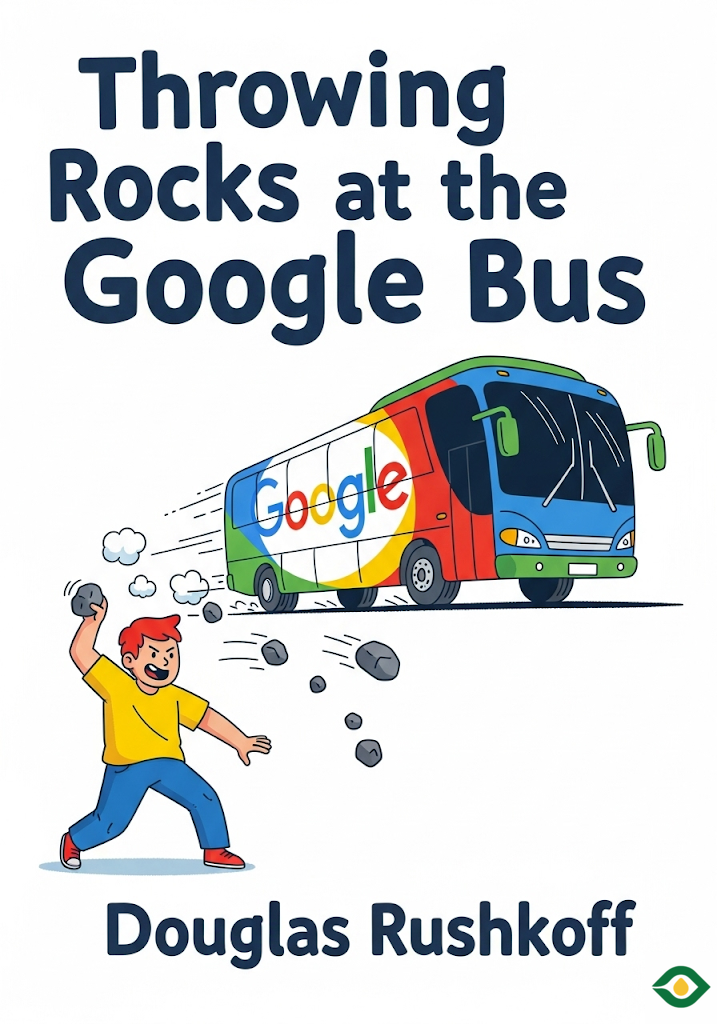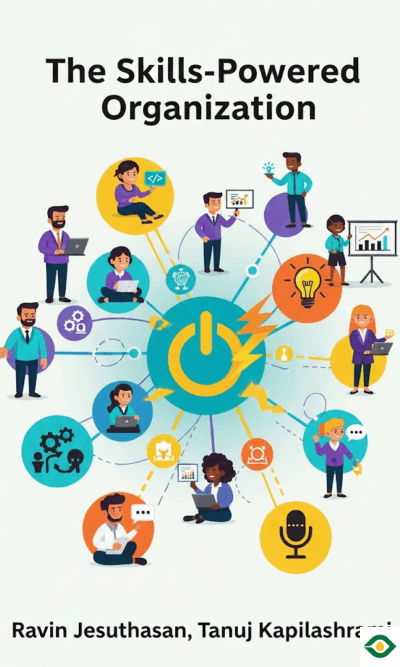Description
The book Throwing Rocks at the Google Bus looks at how the digital revolution has changed our world in ways that are not always good. The story begins in San Francisco, where the technology boom created wealth for some but pushed out many ordinary people. Teachers, artists, and public workers could no longer afford to live in neighborhoods where they had spent their lives. Rents rose sky-high, and private buses carried well-paid tech employees through streets where many struggled to stay in their homes. When locals protested, even throwing rocks at these buses, it became a symbol of something bigger: the growing gap between the rich and the poor in the digital age.
The author argues that technology was supposed to make life better for everyone. Instead, it has helped a small number of companies and individuals gather enormous power and wealth, while leaving many behind. This isn’t entirely new—it has happened before in history. The book shows that from medieval times to today, elites have used economic systems to keep control, often at the expense of ordinary workers.
Long ago, in Middle Eastern bazaars, trade was open and direct. Craftsmen and farmers could sell their goods to one another without needing middlemen. This gave ordinary people some independence and wealth. But when the merchant class started growing strong, the aristocrats fought back. They created monopolies, gave special rights to certain companies, and slowly took back control of markets. This led to a system where ordinary people no longer traded freely with one another, but instead worked for wages under large companies. This top-down structure still shapes our economy today.
In the digital age, many thought the internet would open opportunities again, giving small businesses a way to reach people directly. Instead, giant companies have become even bigger. Online commerce looks like an open marketplace, but in practice, algorithms and recommendation systems decide what people see and buy. For example, in online music, a few songs dominate because they are pushed by automated systems. Once a track enters a recommendation loop, it keeps being shown, which leads to more sales. Smaller artists get lost, even though there are millions of songs available. Bots, not human choice, now control our tastes.
This same logic applies to many digital platforms. We are told they are about sharing, but really they are about selling. Services like Airbnb and Uber don’t just connect people—they undercut traditional businesses. Hotels have to pay for licenses, safety checks, and staff wages. But someone renting an apartment on Airbnb doesn’t carry the same responsibilities. As a result, hotels lose customers, and people lose jobs. Taxi drivers who trained for years now compete with part-time drivers who just follow a GPS. And soon, even those drivers may be replaced by self-driving cars.
The deeper problem is not technology itself, but the way it has been shaped to favor constant growth and profits for the few. Historically, money was created to make trade easier. Instead of bartering—swapping one good for another—people used coins and notes to simplify exchanges. This helped production grow and lifted living standards. But soon the wealthy realized they could use money itself as a tool of control. They banned local currencies and forced people to use centralized money that came with interest. Borrowers had to repay more than they borrowed, which funneled wealth upward and kept ordinary people dependent.
That system has survived into today’s financial world, where money is no longer just a way to trade—it is treated as an end goal in itself. Companies grow larger and wealthier, while workers see fewer benefits. The push for nonstop growth has also left many people overworked and exhausted.
The author suggests that we don’t need to keep working 40 or more hours a week. Technology has made production efficient enough that people could work fewer hours while still meeting society’s needs. Reducing working hours could actually make people happier and more productive. It would also be better for the environment, since fewer commutes would mean less pollution. When people have more free time, they can contribute in other valuable ways—teaching, caring for others, or creating art—without always expecting money in return.
There are examples of this already working. In Utah, state employees shifted from five eight-hour days to four ten-hour days. Workers had a three-day weekend, reported being happier, and even improved family life. Productivity went up, and the state saved millions in costs. This shows that when systems are designed for people, not just for profit, everyone benefits.
The book also explores an idea that might sound old-fashioned but could solve many problems: local currencies. In Berkshire County, Massachusetts, a local currency called Berkshares allows people to trade within the community. One hundred Berkshares are worth ninety-five US dollars. When people use this currency, they get discounts, and the money stays circulating in the local economy. This strengthens small businesses and keeps wealth in the community instead of sending it to distant corporations.
Local currencies also allow creative financial solutions. For example, if a local pizzeria needs money to expand, instead of borrowing a huge loan from a bank with heavy interest, it can sell coupons in local currency to its neighbors. Customers pay a little now and get more pizza later. The business raises money, the bank takes on less risk, and the community directly supports a local service it values. Everyone wins.
Through these stories, the book argues that the digital economy does not have to repeat the mistakes of history. If we treat money as a tool instead of an end, if we shorten working hours to match real human needs, and if we support local systems instead of only global giants, we could build a healthier and fairer society.
The protests against the Google buses were never just about buses. They were about frustration with inequality, about people feeling excluded from the wealth created around them. The lesson is clear: technology and money should serve people, not the other way around. We need an economy designed for sharing prosperity, not concentrating it in fewer and fewer hands.
In the end, Throwing Rocks at the Google Bus is not just about criticizing big tech. It is about reimagining the future. It asks us to think about how communities can take back control, how work can be rebalanced with life, and how money can once again become a means to connection and trade rather than a tool of domination. The digital revolution does not have to widen the gap between rich and poor. With creativity, fairness, and local action, it could become a path to a more equal and humane society.





